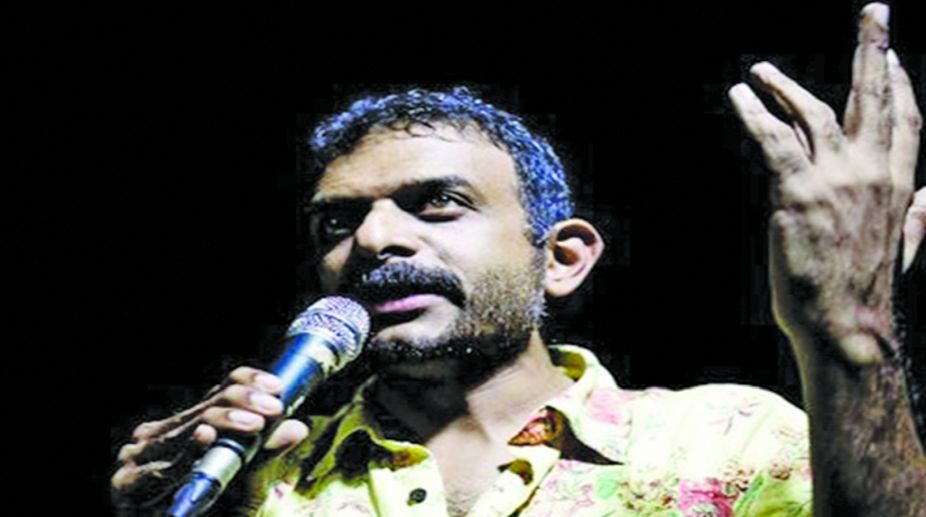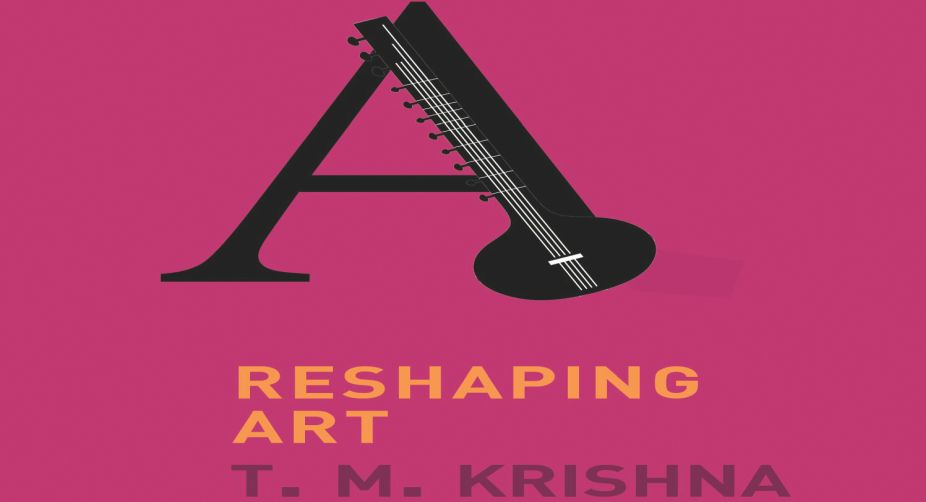Sri Ram Mādhurya: A unique Kathak-Katha-Kutcheri by Sunil Sunkara & Vanitha Suresh
Brahma Gana Sabha witnessed the premiere of “Sri Ram Mādhurya” on 3 January this year, during their Marghazi Dance Festival.
In an India dominated by castes, TN Krishna reiterates the disruption that he had become famous for in well-reasoned arguments. Reshaping Art is a statement of secularism and inclusion that is in danger of being lost in a morass of isms and a plea for the conservation of true art… A review
Anjana Basu | May 20, 2018 1:35 am

TM Krishna
The Spanish called it duende, the feeling that turned the movements of art into an emotional connect. Lorca has a whole essay on the subject of how duende has nothing to do with age or classical perfection, but is a fluid surrender to the emotion that rushes through the body when true art is created.
TM Krishna says something similar in his Reshaping Art — that the moment of surrender happens very rarely but when it does, a kind of magic happens, and that is regardless of whether it is high caste or low caste art or the form or whom the performer is.
Advertisement
Krishna is of course renowned for introducing Carnatic music to fisher folk and freeing it from the shackles of auditoria and other upper-class purviews. He has a demanding philosophy — that those who are cultural activists need to forget the accepted altogether.
Advertisement
Most of what happens in the country he writes is the result of pre-conceived imagery — as in the Babari Masjid incident — and a gradual erasing of the fluidity between race and religion. For example, the greeting Khuda Hafiz, which referred to the grace of no specific god, has been replaced by Allah Hafiz making it very specifically Islamic.
Krishna also compares the musical forms pointing out that there are forms of music that belong to Dalit and other communities that have their equivalent in Brahminical forms. Gaana, for example which was sung at the deathbeds of Dalits and which trashed life and its ills, among many other subjects, in a perfectly rhythmic, harmonious fashion that was in no way inferior to Carnatic music itself.

Then there were the dances taught by the Devadasis, which were no longer received once the Devadasis had been downgraded to the level of prostitutes.
Their Sadir dance culture was replaced by Bharat Natyam that became the received temple dance form and a valuable art form was in danger of extinction. Similarly with the Jogjappas who had their own version of the keertan.
Culture has — or should not have — any divisions because it is a transmitting of a shared experience down generations. Caste brings in barriers as does social status — this despite the fact that people point out that anyone is free to walk into an auditorium and listen to a musical performance and that there is no such thing as division because music is for everyone.
Krishna confines his essay to music because that is his field of specialisation — the other arts are glossed over in the opening though he does point out that it is not possible to cover every art in an essay and the points he has to make applies to every art.
Ultimately, his is a theory of unity in diversity and the kind of secularism that modern India is in the process of losing. That the upper castes had the upper hand is a fact of history but one that can be overcome by openness and knowledge of cultural history and form.
Admittedly, it is difficult for a connoisseur of music to contemplate listening to Carnatic music in the atmosphere of a fishing village like Urur Kuppam with the reek of fish all around and no plush seating, but Krishna describes audience reactions to his music in places like these — from a first disconnect to a picking up of the rhythm among the youngsters in the audience.
The vizha he introduced takes classical art forms to marginal spaces and marginal art forms into classical spaces over the month of February and has put a humble fishing village on the culture map.
Krishna’s theory is that the dedicated listener should be able to endure any discomfort for the sake of art, even though the true moment of immersion in the pulse of art is fleeting. Some artists may only reach it for a few unforgettable minutes in a performance; however, that moment of communion makes the experience unforgettable.
In an India dominated by castes, TN Krishna reiterates the disruption that he had become famous for in well-reasoned arguments. Reshaping Art is a statement of secularism and inclusion that is in danger of being lost in a morass of isms and a plea for the conservation of true art.
The reviewer is a freelance contributor
Advertisement
Brahma Gana Sabha witnessed the premiere of “Sri Ram Mādhurya” on 3 January this year, during their Marghazi Dance Festival.
Vidya Balan pays tribute to legendary singer MS Subbulakshmi on her 108th birth anniversary, recreating iconic looks in a heartfelt photographic homage.
It is not true that people don't understand Carnatic music and do not enjoy it. It depends on the level of interest a person has, to understand or enjoy Carnatic music. I
Advertisement
